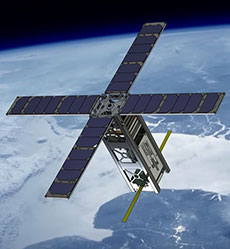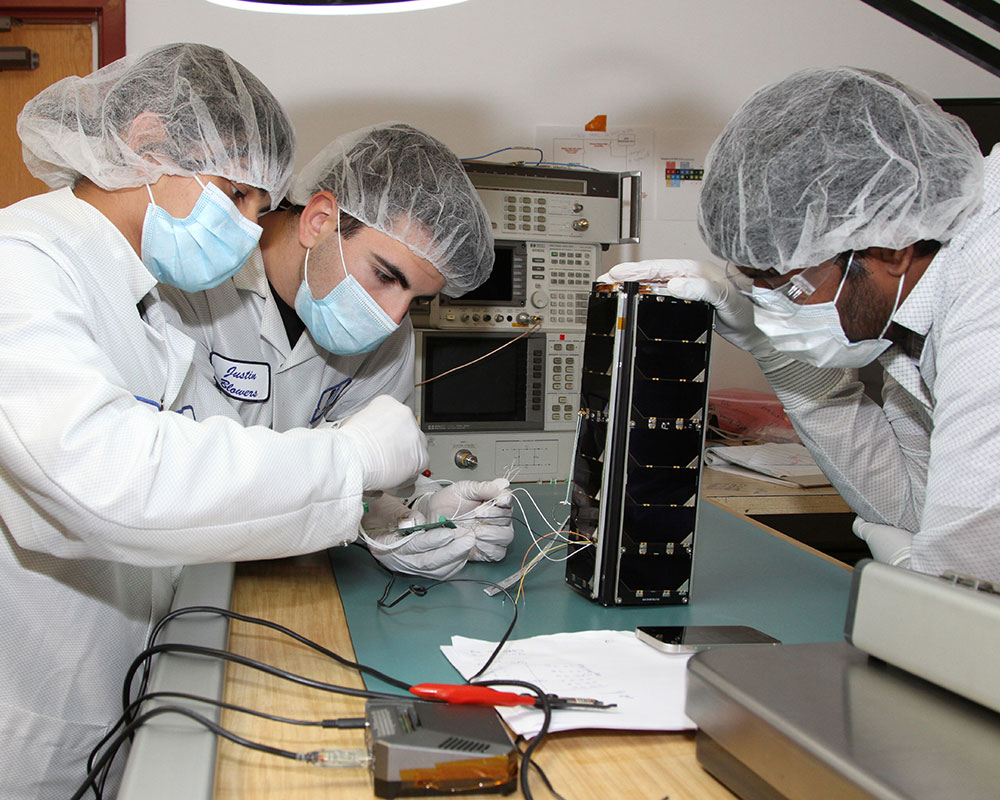
An artist’s rendering of SPACE HAUC in orbit.
A miniature satellite developed by a team of more than 100 UMass Lowell students is scheduled to lift off early tomorrow morning from NASA’s Kennedy Space Center in Florida to test data transmission speeds.
What’s known as SPACE HAUC (Space Hawk)—so named to recognize UMass Lowell’s athletic teams, the River Hawks—is scheduled to travel to the International Space Station for launch into Earth orbit in October. It was paid for, in part, by a $200,000 grant from the space agency.
“Our goal is to train students to be the next generation of astronomers and space scientists and engineers through hands-on involvement in all phases of the mission, from instrument development to data analysis,” said UMass Lowell Physics Professor Supriya Chakrabarti, who leads the university’s Lowell Center for Space Science and Technology.
The cube satellite or “CubeSat,” which is a miniaturized, low-cost alternative to larger models, measures about a foot in length and four inches in both width and height and weighs about nine pounds. It will be placed on board a SpaceX Dragon spacecraft on a Falcon 9 rocket that is expected to launch at 3:37 a.m.
The satellite’s yearlong mission is to successfully demonstrate it can transmit data at up to 50 to 100 megabits per second—significantly faster than current models.
Once deployed from the space station this fall, the satellite will reach altitudes around 240 miles while circling the Earth approximately every 90 minutes at about 17,000 miles per hour. Four solar panels will supply electricity to power the satellite’s electronics.
Once SPACE HAUC is in orbit, the students will maintain a communication link between it and ground stations at UMass Lowell and the MIT Haystack Observatory in Westford. The satellite will gradually lose altitude and fall back to Earth, disintegrating and burning up high above the ground.

